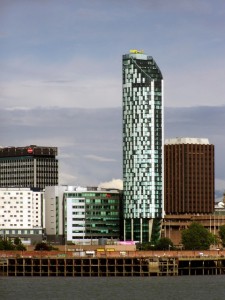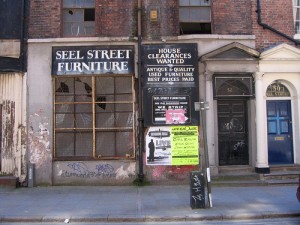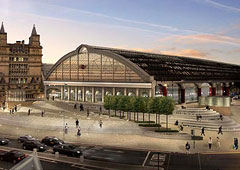
West Tower, Brook Street, Liverpool, by E Pollock via Geograph
We’ve moved a step closer to Peel’s vision of ‘Liverpool Waters’ with funding being secured for the 54 storey Richmond Properties/Y1 tower towards the north docks, at the junction of the Strand and Leeds Street. It’s 25m taller than the current tallest tower, Tower West, but has been redesigned (again) after a failed attempt at getting planning permission in 2007.
Having failed to get the sleek design past the Council planning committee, it seems that the architects have thrown a bucket of Sticklebricks at the south side, to see what sticks (check out the third pic in the slideshow via the link above). Comments in the Architect’s Journal include the terms ‘pig ugly’, ‘hubris’ and ‘shoebox’ (though the third of these is a Wayne Colquhoun comment, so pinches of salt all round).
CABE criticise Pathfinder scheme
Further criticism for Liverpool’s attempts at regeneration come from Colquhoun’s arch enemies, the Commission for Architecture and the Built Environment (CABE). The commission has hit out at the New Heartlands Housing Market Renewal scheme, particularly parking courts and the quality of housing. SAVE’s Will Palin added to the judgment, claiming that “swathes of good Victorian terraced housing been emptied and left to rot”, to be replaced by inferior buildings.
New Pictorial History of Liverpool
OK, enough about planning for now. Adrian McEwen (via Twitter) pointed out the new Streets of Liverpool website.
This blog brings you views of Liverpool from across the 19th and 20th Centuries, with a paragraph or two about what you can see in the photos. The February 8th post is all about Lost Churches of Liverpool, which is a kind of post-script to the 2001 book The Churches of Liverpool by David Lewis, which was published by the blog author.
It’s great to see some little admissions of what the publisher would have liked to have done better in the book (an index, for example), but to make up for this (perhaps!) future blog posts will give us photos of the greatest losses to the city, starting with St George’s Church, which stood where Liverpool Castle once was, and where now we find the Victoria Monument.
The most recent post as of this writing does a similar service to other lost Liverpool buildings, including arguably the most-missed: the Customs House, which was needlessly demolished in the post-Blitz redevelopment.
Make sure you keep an eye on this new blog – it promises to be a good one!









